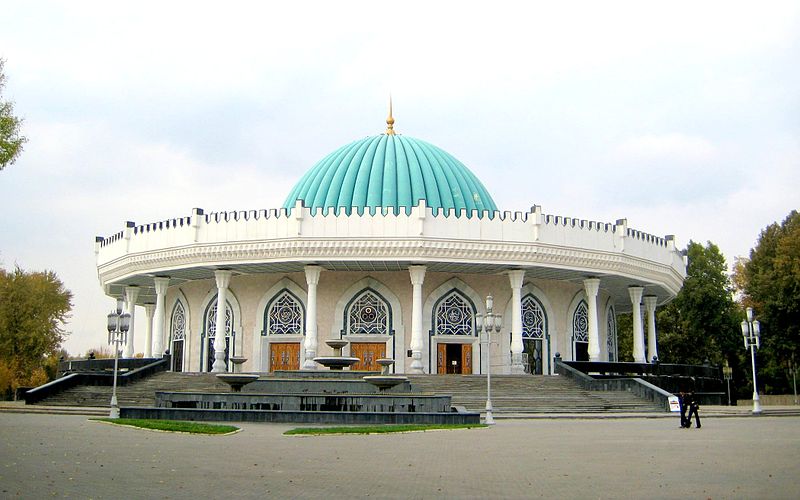


See Part 1: Introduction | Part 2: The rise of chess in Central Asia
Theories about the origins of chess abound. Most point to India, however, arguments often surge naming Persia, Mongolia, China, Arabia and other corners of the Earth as the cradle of the most noble of games. One thing is certain: whatever reached Europe from any of these shores — be that goods or games — had to pass through the Silk Road.
As a network of Eurasian trade routes, from the second century BC until the mid-15th century, the Silk Road served as a bridge between the East and the West, influencing economic, cultural, political, religious and artistic diversities. Games, including chess variants, were played at the many caravanserais along the road. Tired tradesmen that were resting and recovering from the exhausting journey spread the game on their way to various destinations. Reaching Europe, chess variants have undergone changes and improvements until they got the shape that is now known as ‘classical chess’.

A well-preserved caravanserai in Shaki, Azerbaijan | Photo: Azerbaijan State News Agency
The Silk Road suffered disruptions of trade due to wars or plagues. After a period of decline, it was re-established during the Mongol Empire, in the 13th and 14th centuries. At first, the fierce Mongol ruler Genghis Khan pillaged and burnt to the ground the besieged towns that were the main trading centres, like Bukhara and Samarkand (today in Uzbekistan).
However, Samarkand had its renaissance in 1370, when it became the capital of the new Timurid Empire under the Turko-Mongol ruler, Timur. Appreciative of the arts and culture, Timur gathered the best exemplars from the occupied territories and forcefully moved artisans and intellectuals from across Asia to Samarkand, which became the most developed trade and cultural centre in the Islamic world.
Thanks to Timur, a Renaissance flourished in his empire even before the Renaissance in Europe, which was marked by the Italian Quattrocento. Literature, arts, mathematics, architecture and even astronomy were given a prominent place in the cultural development of the Timurid Empire, an empire that reached its peak in the 15th century. Ulugh-beg, an astronomer who made highly accurate observations of the positions of stars before the invention of the telescope, built an observatory, which was sponsored by Timur. The Ulugh-Beg’s observatory is preserved on the outskirts of Samarkand, and it is open to tourists today.
Timur built the Registan Square in Samarkand, which still stands as a witness to his scholarly pursuits. It comprises three learning centres, called madrasah, with large lecturing halls.

Registan Square in Samarkand | Photo: Wild Frontiers
Members of the Timurid dynasty established two significant empires, the Timurid Empire (1370–1507), based in Persia and Central Asia, and the Mughal Empire (1526–1857), based on the Indian subcontinent. Therefore, the Timurid Renaissance was strongly influenced by Persian and Indian cultures.

A Persian style miniature of Tamerlane seated on his throne | Photo: BBC News Magazine
Timur was as fierce, cruel and ambitious as his predecessor Genghis Khan, but, apart from his soft spot for the arts, he had one more peculiar weakness: chess. He loved to play chess, and it is said that he even invented a chess variant called ‘Tamerlane Chess’. Tamarlane is another name under which he is known. It represents a variation of Timur Lang (in Persian, Timur-i-lang), meaning ‘Timur the Lame’, a nickname that was given to him because he was disabled on his right side of the body.
It is said that he would incite several players to a competition, thus setting up the first form of an organized chess tournament.

Initial position of Tamerlane Chess | Photo: Chess Variants
Tamerlane Chess is a more elaborate form than the modern chess game. It is played with 28 pieces for each player on a 110-square board with two additional squares protruding from the left side on the ninth row and from the right side on the second row, making a total of 112 squares.
Timur also reached the Ottoman Empire and was victorious in the Battle of Ankara in 1402, defeating Sultan Bayezid I. The Ottomans were obviously influenced by the various art forms and cultural achievements of their neighbours and rivals. In the splendid Turkish serial Suleiman the Magnificent — about the most illustrious period of the Ottoman rule (1520 -1566) — chess is featured in a couple of episodes.

The prince Selim II instructs his son in chess | Screenshot from the serial ‘Suleiman the Magnificent’
The region that was closest to Timur's heart and which most benefited from his generosity was Central Asia, particularly Uzbekistan, where he was born in 1336, and where he died, in 1405.

Tamerlane’s shrine in Samarkand, Uzbekistan | Photo: Wikimedia Commons
Hero or villain, Uzbeks today hold Timur as their favourite son, and he is revered throughout the country.

Timur Lane Museum in Tashkent, Uzbekistan | Photo: Wikimedia Commons

A bust of Timur reconstructed by archaeologist and anthropologist Mikhail Mikhaylovich Gerasimov, using his own technique of forensic sculpture
The first findings of 'chess traces' in Central Asia date much earlier than the Timurid Empire. The oldest-known chess set, with seven pieces, dates from about 700 AD. It was excavated in 1977 by archaeologist Yuriy Buryakov, at the ancient settlement known as Afrasiab in Samarkand, in Uzbekistan. They are housed today at the Samarkand State Museum.

A full set of reconstructed Afrasiab chessmen has been created by Ancient Chess
Ancient Chess has also produced an informative short video:
| Advertising |